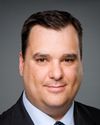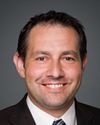Thank you, Mr. Chair. I would also like to thank my colleagues.
I am pleased to be here today to discuss with you Bill C-49, the Canadian Museum of History Act, and to respond to questions you may have. Accompanying me today are Daniel Jean, Deputy Minister of Canadian Heritage and Hubert Lussier, Assistant Deputy Minister of Citizenship and Heritage.
I will keep my remarks brief to allow as much time as possible for discussion and to answer your questions on the bill.
Bill C-49 is a very short bill. It's not a tough read, of course. It spells out the mandate for the proposed Canadian Museum of History. The mandate is very simple and clear. It reads:
The purpose of the Canadian Museum of History is to enhance Canadians' knowledge, understanding and appreciation of events, experiences, people and objects that reflect and have shaped Canada’s history and identity, and also to enhance their awareness of world history and cultures.
That's what the bill says. There is nothing ideological about this. It's actually quite straightforward.
In 2017, we will be celebrating Canada's 150th birthday. This is a once-in-a-generation opportunity to celebrate all that Canada has accomplished, to look back at 150 years of history, to be thankful for our past, and to think ahead to the next 150 years.
We have in Canada today, sadly, an entire generation of Canadians who are largely illiterate about Canada's history. It's the truth. With the proposed Canadian Museum of History we are going to start building the national infrastructure that I think this country so desperately needs, so that we can tell our stories one to another so that Canadians can better understand our local histories and our shared histories.
I feel that we've had a constructive debate on this legislation in the House. Some members of Parliament have raised some concerns about what this museum could lead to, and I just want to respond to a couple of the specific concerns that I know were raised in the House by Mr. Simms and Mr. Nantel.
First, let me quote from the Museums Act, particularly on the issue that has been raised that the museum could be interfered with by the government, the minister, or, frankly, any member of Parliament. The Museums Act is very clear. It spells out in a straightforward way the independence of all of our museums, including this museum. Section 27 spells out the independence of our museums when it states: “No directive shall be given to a museum...with respect to cultural activities, including...its activities and programs for the public, including exhibitions, displays and publications; and...research”.
Section 27 of the Museums Act is very clear, it's straightforward, and it dispels any false accusations that this bill or the creation of this museum would be in any way a politicization of Canada's history, because it's the law.
In fact, I am pleased by the widespread, non-partisan support this project has received from historians and historical associations across the country.
I want to say that I'm very pleased with the broad-based support that the proposal of creating a Canadian museum of history has received. Of course, no support for a proposal is ever unanimous, as I said to Mr. Simms in the House.
I remember the debate when the Liberals, at a time of recession, made the decision to create the Canadian War Museum. That was a very controversial decision, and it turns out that today the Canadian War Museum is indeed one of the best museums in this country. It has, as its only peers in the world, Les Invalides in Paris, and the Imperial War Museum in London. It's a fantastic museum that I think all Canadians, regardless of ideology, believe in.
That museum was launched with a great deal of difficulty and if you look at the proposal that we have here to create a Canadian museum of history and the broad-based support this museum has received, I think it's important that this be pointed out. This museum has been supported, for example, by Douglas Cardinal, the original architect of the Canadian Museum of Civilization. It's supported by the Mayor of Ottawa, Jim Watson. It's supported by the Mayor of Gatineau, Monsieur Bureau.
This project also has the support of celebrated historians from across the country, including award-winning historian and author, Michael Bliss, who had this to say about this bill. He said:
it is very exciting that Canada’s major museum would now be explicitly focused on Canada’s history, thanks to this government for making the museum possible.
Jack Granatstein, of course the former chair of the Museum of Civilization, supports this legislation and the creation of this museum. He said:
This move is exactly what I thought should happen. I'm delighted the government and the museum are doing it.
John McAvity, who is going to be with you later this afternoon, also supports this because he recognizes the value of this large national institution, the largest museum in all of Canada, and the value of creating a pan-Canadian network of all of Canada's museums, which can teach and disseminate information about Canada's history and share resources and collections and move items around the country.
This will be of benefit not only for this great institution here in the national capital but also for every museum across the country, as they could potentially become official partners of the museum, thereby allowing them access to the 3.5 million items that are in the collection of this museum, of which more than 90% are in storage and to which no Canadian now has access.
The Historica-Dominion Institute is also supporting this—which, by the way, is also one of the great organizations across this country, working with and reaching out to children across this country—and recognizes its value as well. The Ontario Museum Association has come out in support of it—also, by the way, important historians who are not Conservative and probably would chastise me or anybody for suggesting that they might in any way be Conservative.
For example, as I noted in the House, John English, a former Liberal member of Parliament and a biographer of Pierre Trudeau, has come out in support of this legislation, congratulating the government for supporting this initiative, as has Richard Gwyn, who is a biographer of both John A. Macdonald and Pierre Trudeau.
Deborah Morrison, the head of Canada's national history society, has said, “the potential for the new Museum to help create a national framework for our history is compelling. And the time is right.”
I agree with her. I have to say as well that I was very pleased, when we had the second reading vote in the House of Commons, that an independent member of Parliament, one of our colleagues from Thunder Bay, supported this legislation, as did Elizabeth May, the leader of the Green Party. They support this legislation, as do, by the way, New Democrats on the provincial scene in British Columbia.
I'm also pleased to say that this past weekend I spoke at the national meeting of the FCM, the Federation of Canadian Municipalities, in Vancouver. As part of my lunchtime speech to more than a thousand delegates, I presented this project, which was entirely well received; there were no complaints. When I met with the executive of the FCM in a closed-door meeting before my speech, there was unanimous support for this from mayors across the country—from Mayor Nenshi of Calgary, from Gregor Robertson of Vancouver, a former MLA in British Columbia who sees the big value of this project and what it would mean for the city of Vancouver and, indeed, for all of this country.
This is a proposal that we've put forward as we go toward Canada's 150th birthday in 2017. It has broad-based support from Canadians of all kinds of ideologies and all kinds of backgrounds—and, by the way, of non-ideologies, just people who are passionate about the teaching and the learning of Canada's history, who think that we deserve to have our own Smithsonian; that we deserve to have a large national museum about which we can be incredibly proud. We do have that in the Museum of Civilization, but we can do so much better with a new Canadian museum of history, by tying all of our institutions across this country together as we head towards our 150th birthday and celebrate the incredible stories of Canada's history gone by.
Many of you have been in the House and have heard me speak in the House on the details of the reforms we are putting forward. There is $25 million to do the changes of half the floor space in the existing museum. The Children's Museum, which is in the museum itself, will stay as it is. The Canada Hall will be reformed, in the back. The First Peoples exhibit, which is award-winning and spectacular, will stay as it is.
We're reforming the floor space as well, because it hasn't been updated in over 20 years. As a matter of fact, in the Canada Hall there is virtually no representation of aboriginal Canadians whatsoever, and that needs to be updated and improved.
We can do better; we should do better. We're heading towards our 150th birthday. We have great stories as a country to tell. I think we ought to do a service to them.
I would close by saying to my colleagues that I understand that there are some concerns about this. Maybe this will be a circumstance of “hear me now, believe me later”, but I'm here to tell you that this is a project that has broad-based support across the country; it's self-evident in the votes we've had in Parliament and in those who have publicly come out to endorse this project. It's time for this country to think big and to do something bigger than just the obvious stuff and to have great national institutions that bind us together.
As I said to Scott, those are the great moments. I'll say this: in the sweep of Canada's history, the best of the NDP has been seen when they have supported national projects that they thought were national in scope and national in consequence; for example in the support of medicare. That was a national idea, an idea that was good for the entire country and that they advocated, and they went beyond partisanship and reached out to get support. Of course, it was a Liberal federal government that did it, but it was a national idea that they worked with others to get done, because they believed in it.
This is equally true with the Liberal Party; they have had some national projects and national efforts. And Conservative governments in the past, we've had ours as well. Along with the other institutions that we have in this country, I think this museum will be a part of the fabric of what we're trying to do: to strengthen the fabric that binds this country together.
When you think about it, Canada is the second largest country in the world in size, but in terms of population we're the 34th largest country in the world. What unites us as a country? It is language, the arts, culture, a shared sense of history, an understanding of one another, an understanding of our grievances, of the difficulties of the past and how we got over them and how we still struggle, our shared sense of identity.
In a massive country like this, that has historically been divided—English and French, east and west, north and south, aboriginal and non-aboriginal, labour and business, Protestant and Catholic in the early days—we've been able to overcome these divisions through the sweep of Canada's history because we've had a better understanding over time about what it is that we can accomplish.
We are moving forward as a government with this. We're very proud of this project. I deeply and sincerely thank all those who have come on board across this country, from all kinds of different political and ideological backgrounds, to support this effort. I would urge my colleagues on this committee, and indeed all members of this House, to look at it that way. That's how I presented this.
My colleagues know that I presented and discussed this legislation with them. I talked to my colleague, the heritage critic from the NDP, before we tabled this legislation. I told you about this idea. I showed you the legislation. I showed you what we had in mind. I showed it as well to the Liberal critic. I showed it to Elizabeth May, as the leader of the Green Party in the House. It's one of the reasons that she's supporting this bill. I want to work with other members of Parliament to get this project right.
I'll turn it back to you, Chair, and to colleagues for questions about this project. I would urge you all to give this serious thought, to support this institution, to support this effort to build this network, this pan-Canadian network, of great history institutions that will keep this country united and better educated, with a better understanding about our past, so that we can stay united going forward.
Thank you.













